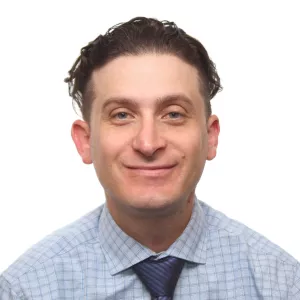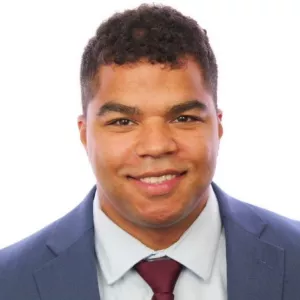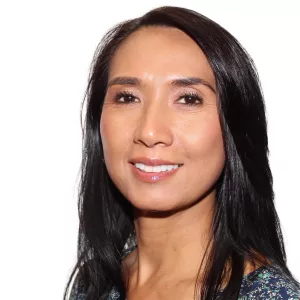Start Your Career in Radiation Oncology Physics
Welcome to the AdventHealth Medical Physics Residency Program at the Cancer Institute’s Department of Radiation Oncology. Our Commission on Accreditation of Medical Physics Education Programs (CAMPEP) accredited training program provides clinical training and educational activities to prepare graduates for a career in medical physics.
Our residency program offers two years of full-time, hands-on clinical training, with residents interacting with staff physicists, physicians, dosimetrists, nurses, radiation therapists and service engineers to learn safe and effective patient care. Upon program completion, residents will demonstrate competency in all areas of clinical radiation oncology physics and will be qualified to take the American Board of Radiology certification exam in Therapeutic Medical Physics.
Our oncology medical physics program is located at AdventHealth Orlando, AdventHealth’s flagship campus and a 1,368-bed, comprehensive quaternary care and mixed academic/private practice referral center. We house the only accredited Extracorporeal Membranous Oxygenation and Pulmonary Hypertension Programs in Central Florida and the only Bone Marrow and Comprehensive Solid Organ Transplant programs in the AdventHealth network.
We look forward to sharing our program with you!
– Adi Robinson, PhD, DABR
Senior Medical Physicist
Director, Medical Physics Residency Program
About Our Program
- Program History
-
Health Cancer Institute started its oncology medical physics residency program in July 2024 with its first resident. The program received CAMPEP accreditation in 2024.
As of 2024, we will be hiring a second resident in July 2025.
- Program Statistics
-
In accordance with CAMPEP requirements, the following table contains data from our applicants and residents for each year of the program:
Year Applicants Accepted Graduated ABR Status Current Employment 2023 2024 2025 - Department Overview
-
The Department of Radiation Oncology at the AdventHealth Cancer Institute has six locations across Central Florida and treats an average of 200 patients per day. The department faculty includes experts with unique expertise in brachytherapy, stereotactic radiosurgery and treating cancer of the liver, pancreas and head and neck.
The department offers state-of-the-art facilities and technologies, including:
Therapeutic Systems- Linear Accelerators:
- Six Varian TrueBeam
- Two Varian Trilogy
- Elekta GammaKnife Perfexion
- XoFT Axxent IORT Controller
- Elekta Flexitron HDR brachytherapy afterloader
Treatment Planning Systems
- Varian Eclipse
- Elekta GammaPlan
- Elekta Oncentra
Imaging Systems
- Three Siemens Somatom Confidence 4D Dual Energy CT simulator
- Two Phillips Brilliance Big Bore 4D CT simulator
- Samsung BodyTom HDR Intraoperative CT simulator
Motion Management Systems
- Two Varian Identify systems
- VisionRT system
- Six RGSC systems
- Two RPM systems
- Linear Accelerators:
- Benefits
-
As a resident employed by AdventHealth Cancer Institute during the academic year of 2023-2024, you’ll receive the following benefits:
- Medical insurance (health coverage at no cost for the resident and at a reduced rate for their dependents)
- Disability and life insurance at additional cost
- 20 paid vacation days
- The program will cover the cost of a Florida medical physics license and society dues
- Funding for one professional conference and two chapter conferences
A detailed explanation of benefits is available in the Student Handbook that you’ll receive during orientation.
- Admissions
-
One radiation oncology physics residency position will be available starting July 1 of each year. The application process is conducted via the Medical Physics Residency Application Program (MP-RAP) administered by the AAPM and will follow the deadlines listed on the website. Placement of applicants into the program is done via MedPhys Match.
Prospective residents should provide the following when applying:
- Personal information (name, address, contact information)
- Military service history (if applicable)
- Official transcripts (undergraduate and graduate)
- Names of three (3) references (including one from a current advisor or department head)
- Personal statement (max 3000 characters) indicating why you want to pursue medical physics, and anything else you want to communicate to the applications reviewers
- Curriculum Vitae (should include awards, publications and presentations)
All applications will be reviewed thoroughly by the program director and the admissions subcommittee. Upon review, the applicate pool will be ranked according to their submitted application, and the top 10 to 20 candidates will be invited for a phone interview.
After the phone interviews have concluded, 10 to 15 candidates will be invited for an on-site visit. Candidates will meet with physicists, physicians, current residents and members of the dosimetry team. After each interviewer provides their evaluation of each candidate to the admissions subcommittee, a final rank list will be compiled and submitted to MedPhys Match.
In March, offer letters will be sent to successful candidates as required by the MedPhys Match.
- Curriculum and Training Plan
-
The oncology medical physics residency program is divided into clinical rotations that will vary in duration (between one and three months). During the first year, the resident will mostly observe and assist in clinical cases throughout each rotation. It is expected that the resident will spend their time reviewing literature and other didactic reads, observing the clinical staff and assisting with supervision.
The second year of the program will build upon what the resident learned in their clinical rotations during the first year. During this time, the resident is expected to achieve competency in the duties of a medical physicist and is expected to perform these duties with minimal supervision.
- Clinical Rotations
-
Orientation (One Month)
The residents are introduced to staff, equipment and procedures at the Department of Radiation Oncology. The resident will meet with the program director to develop a clinical/didactic training plan, attend required hospital orientation training and spend time observing clinical activities at each of the clinical areas in the department.Dosimetry 1 (Three Months)
The resident is introduced to radiation oncology dosimetry. The rotation includes familiarization with patient immobilization and setup, 3D planning, inverse planning and related quality assurance tasks.Dosimetry 2 (Three Months)
The resident is introduced to more complex aspects of radiation oncology dosimetry. This rotation includes familiarization with complex patient immobilization/setup, inverse planning for intensity-modulated techniques, inverse planning for stereotactic techniques and related quality assurance tasks.External Beam 1 (Two Months)
The resident is introduced to and assists with the various physics tasks associated with external beam treatment delivery. The external beam rotation includes quality assurance procedures for both equipment and patient charts, as well as special procedures.External Beam 2 (Two Months)
In this rotation, under the guidance of a mentor, the resident will assist with and perform the various physics tasks associated with external beam treatment delivery. The external beam rotation includes quality assurance procedures for both equipment and patient charts, as well as special procedures.Brachytherapy 1 (Two Months)
In this rotation, under the guidance of a mentor, the resident is introduced to the various physics tasks associated with brachytherapy. The brachytherapy rotation includes quality assurance procedures for both equipment and patient charts, brachytherapy treatment planning and brachytherapy delivery.Brachytherapy 2 (Two Months)
The resident will assist with and perform the various physics tasks associated with brachytherapy. The brachytherapy rotation includes quality assurance procedures for both equipment and patient charts, brachytherapy treatment planning and brachytherapy delivery.Stereotactic Radiosurgery and Radiotherapy 1 (Two Months)
The resident is introduced to the various physics tasks associated with stereotactic radiosurgery and radiotherapy. This rotation includes quality assurance procedures for image guidance and delivery systems (both Linac and Gamma Knife), treatment planning and delivery of stereotactic treatments, and checks of stereotactic patient charts.Stereotactic Radiosurgery and Radiotherapy 2 (Two Months)
The resident will assist with and perform the various physics tasks associated with stereotactic radiosurgery and radiotherapy. This rotation includes quality assurance procedures for image guidance and delivery systems (both Linac and Gamma Knife), treatment planning/delivery of stereotactic treatments, and checks of stereotactic patient charts.Commissioning (Two Months Concurrent with Shielding)
In this rotation, the resident is introduced to linear accelerator acceptance testing, beam commissioning and treatment planning system calculation algorithms.Shielding (Two Months Concurrent with Commissioning)
In this rotation, the resident is introduced to shielding techniques.Elective Rotation (One Month)
The resident is given the opportunity to learn about a variety of topics, based on their specific interests. Possible topics include Radiation Physics, Clinical Radiation Oncology, Radiation Safety, Nuclear Medicine, Imaging or other related Radiation Oncology topics. Each resident is expected to choose the topic of their elective rotation, the mentor who they wish to work with and write a one-page proposal regarding their chosen topic, along with completion milestones and metrics of successful completion of the rotation.Administrative and Professional Rotation (One Month)
The resident is introduced to the professional and administrative aspects of a medical physicist’s job. This rotation also allows time for the resident to learn about the job search process, become familiar with professional publications and societies and study for the ABR certification exam. In addition to clinical training, didactic readings are also required. Residents are also required to gain some understanding of Radiation Oncology Incident Learning processes during this rotation. - Journal Club and Clinical Coverage
-
Journal Club timeframe: Over the course of the residency (longitudinal)
The goal of our journal club is to allow the resident to gain scientific literacy by selecting a manuscript to read, digest, interact with and present to a group. After participating in the journal club, you will be able to read a technical document, think about it critically and share technical information with colleagues in a formal setting.To help gain the literacy skills that are required from a medical physicist, the resident will complete four different projects over the course of the residency:
- Review a research article using an outline for key aspects
- Learn how to search for and select a good journal article
- Compare and contrast a strong and weak article on the same topic
- Research and defend one side of an argument in a point/counterpoint
Clinical Coverage (One Month)
In this rotation with a mentor (designed to be the last rotation before graduation), the resident is expected to function as a clinical medical physicist and cover all services within the radiation oncology clinic. The resident will work with a rotation mentor and create a clinic coverage schedule for the month and make it available to the program director. This rotation also allows a radiation oncology physics resident to complete any competencies from any other rotation that remained incomplete or needed additional work or repeating for any reason.
Meet Our Faculty

Adi Robinson
Program Director and Senior Medical Physicist

Susha Pillai
Assistant Program Director and Senior Medical Physicist

Joshua Allen
Senior Medical Physicist

William Bradley
Senior Medical Physicist

Gabriel Candelaria
Senior Medical Physicist

Kenneth Cashon
Senior Medical Physicist

Steven Harrell
Chief Physicist

Brian Hames
Senior Medical Physicist

Nina Nguyen
Senior Medical Physicist

Amitpal Saini
Senior Medical Physicist

